In Capri, a Simon Porte Jacquemus Menswear Manifesto
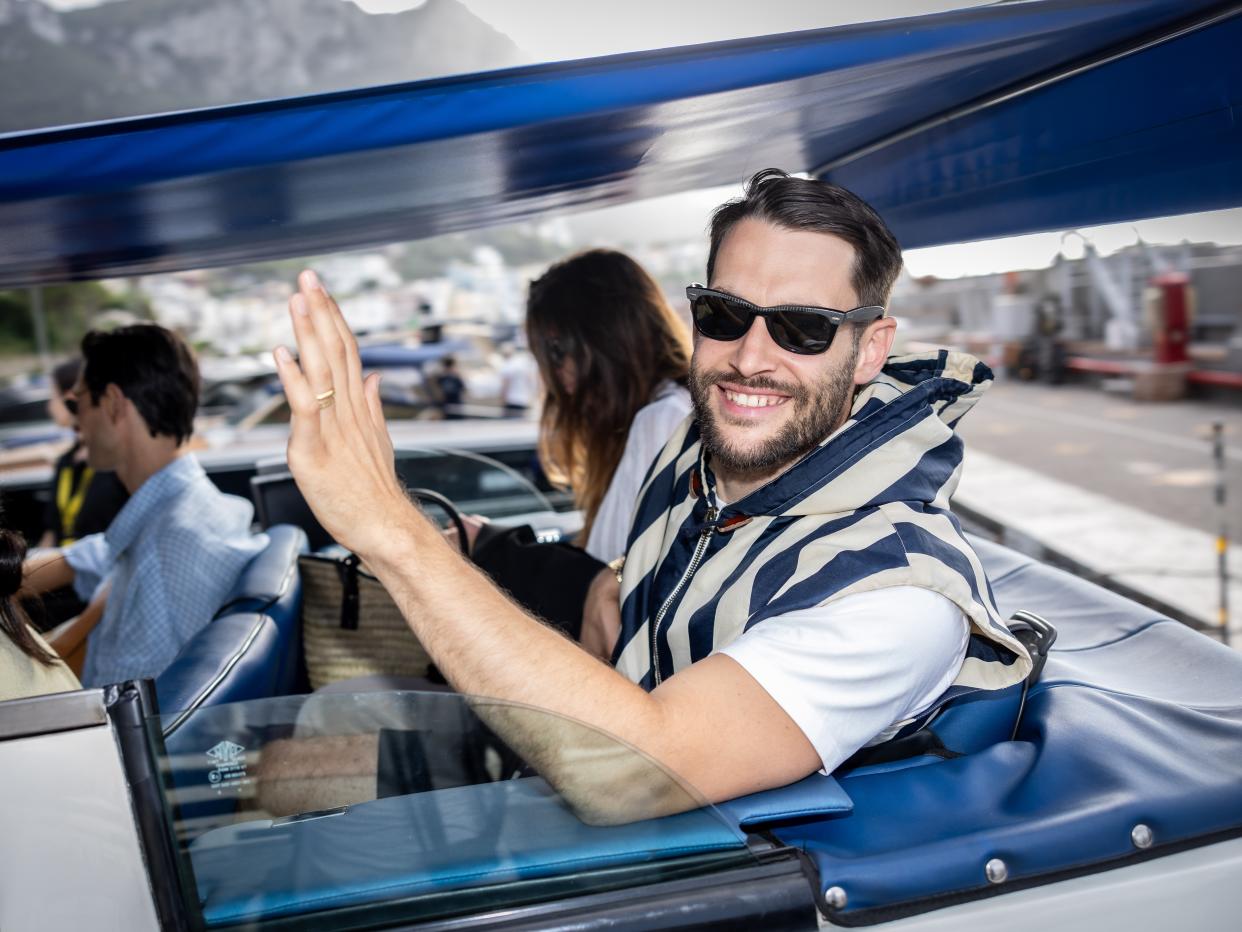
Courtesy of Getty Images / Arnold Jerocki
This is an edition of the newsletter Show Notes, in which Samuel Hine reports from the front row of the global fashion week circuit. Sign up here to get it in your inbox.
Menswear is the fastest growing category at jaunty French label Jacquemus, which is one of the fastest growing brands in fashion right now, with sales that are roughly doubling every year. Why?
Just ask Gwyneth Paltrow, who on Monday afternoon glided across the red brick roof of the Casa Malaparte on the island of Capri to take her front row seat for this season’s Jacquemus show. As she waited for the models to step out under a fierce Campanian sun, Paltrow, not exactly a fashion week regular, explained why she joined founder and designer Simon Porte Jacquemus for the occasion.
“You know, my son is getting very into fashion—he’s obsessed,” Paltrow told me as she hid from the rays under an umbrella. “I mentioned I got an invitation to Jacquemus, and my son said, Mom, you have to go. So I was like, Ok!”
If men’s fashion these days can feel unapproachable by design, too perplexingly cerebral or annoyingly pretentious, Simon Jacquemus is something of an antidote, making clothes from a shiny place of fun and confidence. His slightly rustic, lightly-surrealist vision of French style has evidently caught a wave with young people around the world—the majority of the brand’s clients are younger than the 34-year-old designer. And on Monday, with some help from icon-to-Gen-Z Paltrow, actual Gen-Z icons Dua Lipa and Jennie, a significant 19th-century modernist villa, the ghost of Godard, and some pleasant maritime menswear, Simon Jacqeumus launched the first fireworks of the men’s fashion season.
A quick Show Notes programming aside: the Spring-Summer 2025 menswear calendar got underway last week in London. Pitti Uomo and Milan and Paris Fashion Weeks are up next. If the scuttlebutt on the press boat that ferried us through the Gulf of Salerno to the Casa Malaparte is any indication, the talk of the season is going to be all Chanel. Who is going to get the big creative director job freshly vacated by Virginie Viard, whose departure was announced last week? I’m sure I’ll have more on that in the coming days.
(For now, I’ll float a name I haven’t heard yet: Pharrell Williams! There is a Louis Vuitton-sized reason why Skateboard P won’t go to another 20-billion-plus luxury behemoth. But remember, Pharrell designed a primary-colored capsule collection for Chanel in 2019, walked in several runway shows for his buddy Karl Lagerfeld, and was one of the house’s most prominent male clients. Could he finally launch Chanel menswear while another designer takes over women’s and couture? Probably not. But remember, it’s fashion: anything can happen!)
If there’s one designer who I believe when he says he doesn’t want a huge new job, it’s Simon Porte Jacquemus, who with the Capri show celebrated his brand’s fifteenth anniversary. The Marseille native waved off speculation he was heading to still-designer-less Givenchy back in January, and on Monday he reiterated that he’s “working for the long term, and not for a good check. It’s not my priority.”
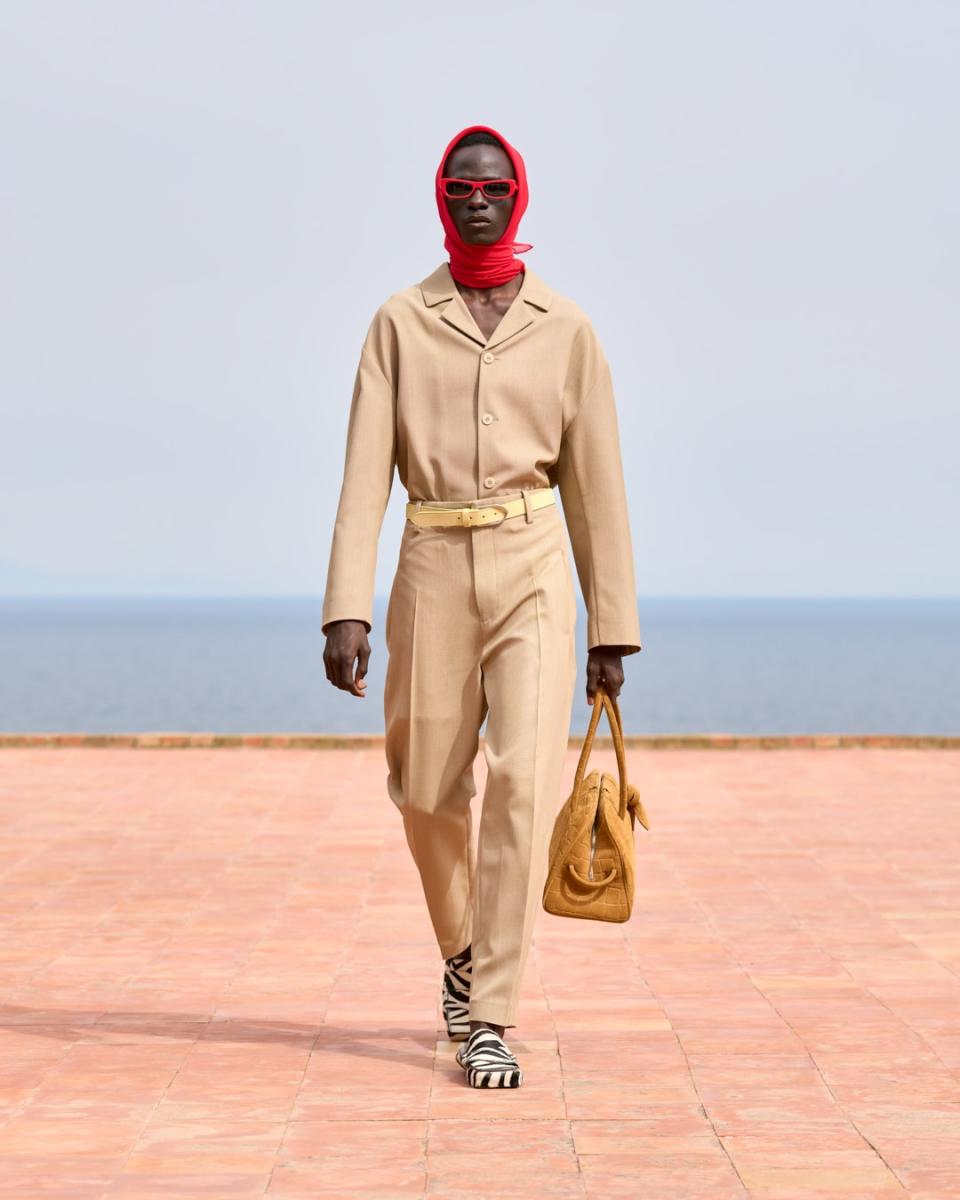
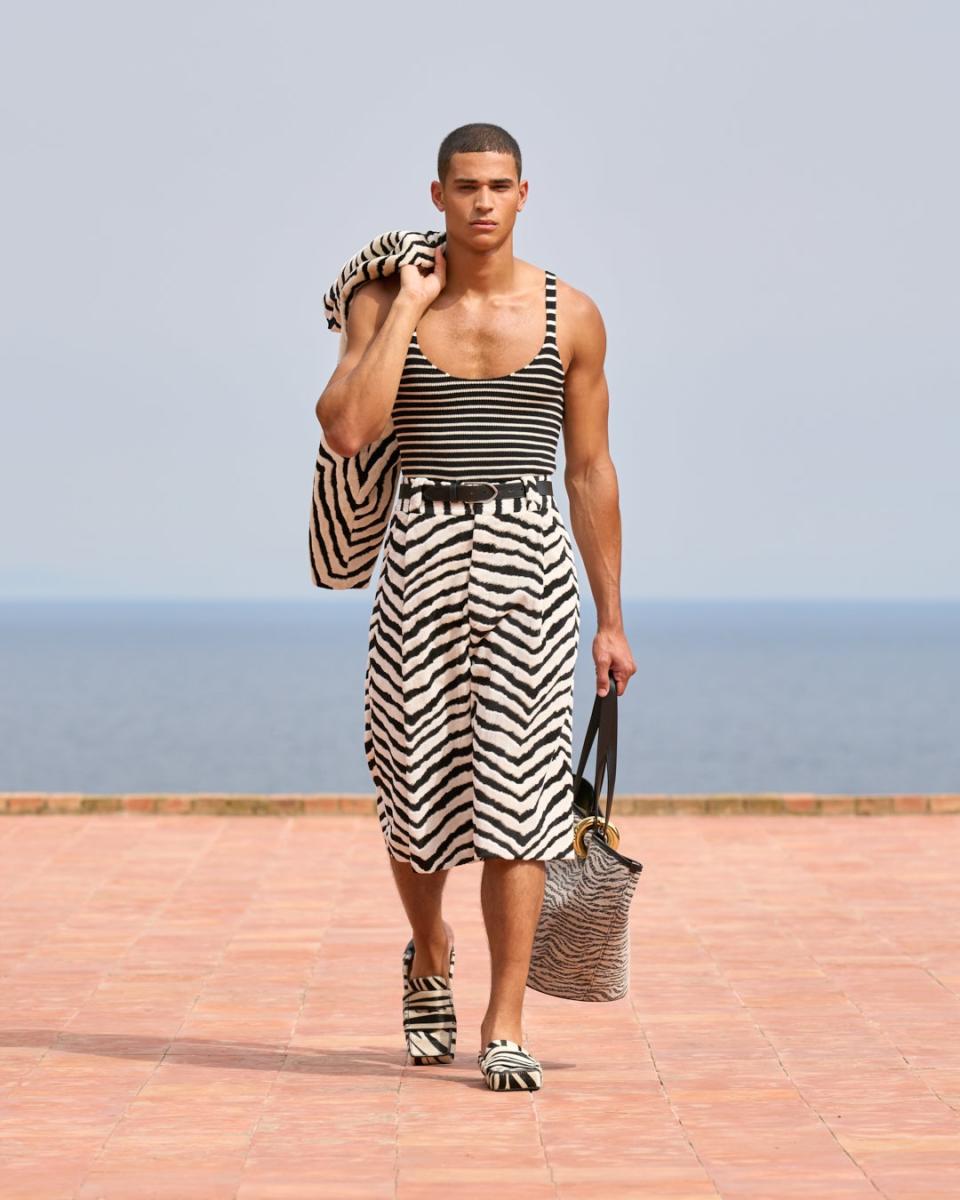
And why would it be? Porte Jacquemus runs an independent operation, holding off-calendar shows in White Lotus-style destinations at times when it can be the center of social media attention. All attention on Monday was focused on the roof of the iconic Malaparte house, which features prominently in the Jean-Luc Godard film Le Mépris.
In a preview before the show inside the second-floor study of Curzio Malaparte, a writer and diplomat who built the red brick edifice in the late-1930s, Porte Jacquemus explained that he founded his brand as a 19-year-old fashion school dropout after watching the Le Mépris trailer over and over, enthralled with the new wave aesthetic, Mediterranean color palette, and the simple chicness of Brigitte Bardot and Michel Piccoli. “I was obsessed by this,” Porte Jacquemus said, “and I decided to create my first collection.” He had been dreaming of hosting a show at the venue ever since. “It's a full circle moment.”
Though he first considered showing over-the-top formalwear in Capri, he decided to keep it simple. “I was afraid when I arrived at the house because beauty can be very dangerous,” said Porte Jacquemus, always the romantic. “You don't want to play with the beauty in a way when you love something so much, it's so pure.”
Owing to its runaway train sales, menswear made up about half of the collection in a significant first for the brand. “I think we find the balance of something playful and chic and easy,” Porte Jacquemus said of this season’s sturdy proposal, which emphasized a structured maritime silhouette, with flyaway collars styled under boatneck sailor smocks and several boating-stripe tops. Navy wool peacoats with sailor collars provided a touch of formality, as did the tight cagoule headwraps several men wore in a succinct nod to Capri queen Jackie O. “When we started the collection, we looked at all the paparazzi pictures of her in Capri, she was quite minimal, just wearing white Capri pants and sailor blues. And I find it so refreshing and suddenly need to look back at this simplicity.”
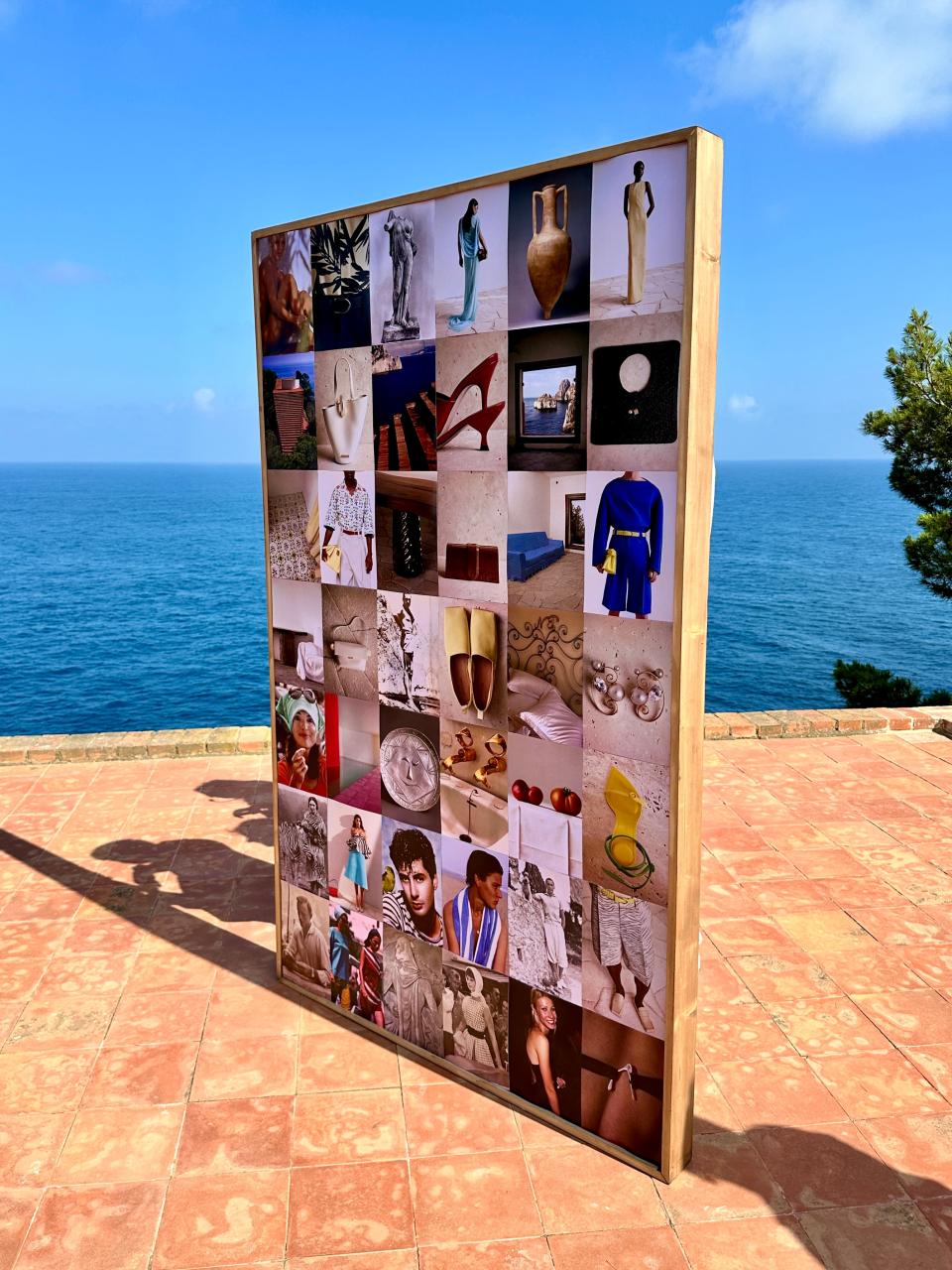
Porte Jacquemus is what you might call a moodboard designer. His process is fairly straightforward: he collages together references of things he likes (modernist architecture, Roman pottery, French farmhouse still lives, celebrities), which his team turns into products. (There is an actual physical moodboard every season which Porte Jacquemus reveals following the show.) The influence is often quite literal. A vintage photo of Signor Malaparte wearing huge shin length shorts became a tailored, modern capri, and a photo of an American woman named Viola Townsend Winmill wearing a zebra coat next to her pet zebra begot even more zebra prints across a summery terrycloth suit, square-toe loafer slides, and a beach bag to hold it all in. (It should be noted that Curzio Malaparte’s outfits were better than his politics.) A photo of ’90s Gwyneth Paltrow on the moodboard became… Gwyneth Paltrow in the front row! Having built his brand with a flirty, personal Instagram-first marketing strategy, Porte Jacqeumus has a well-honed sense of vibes.
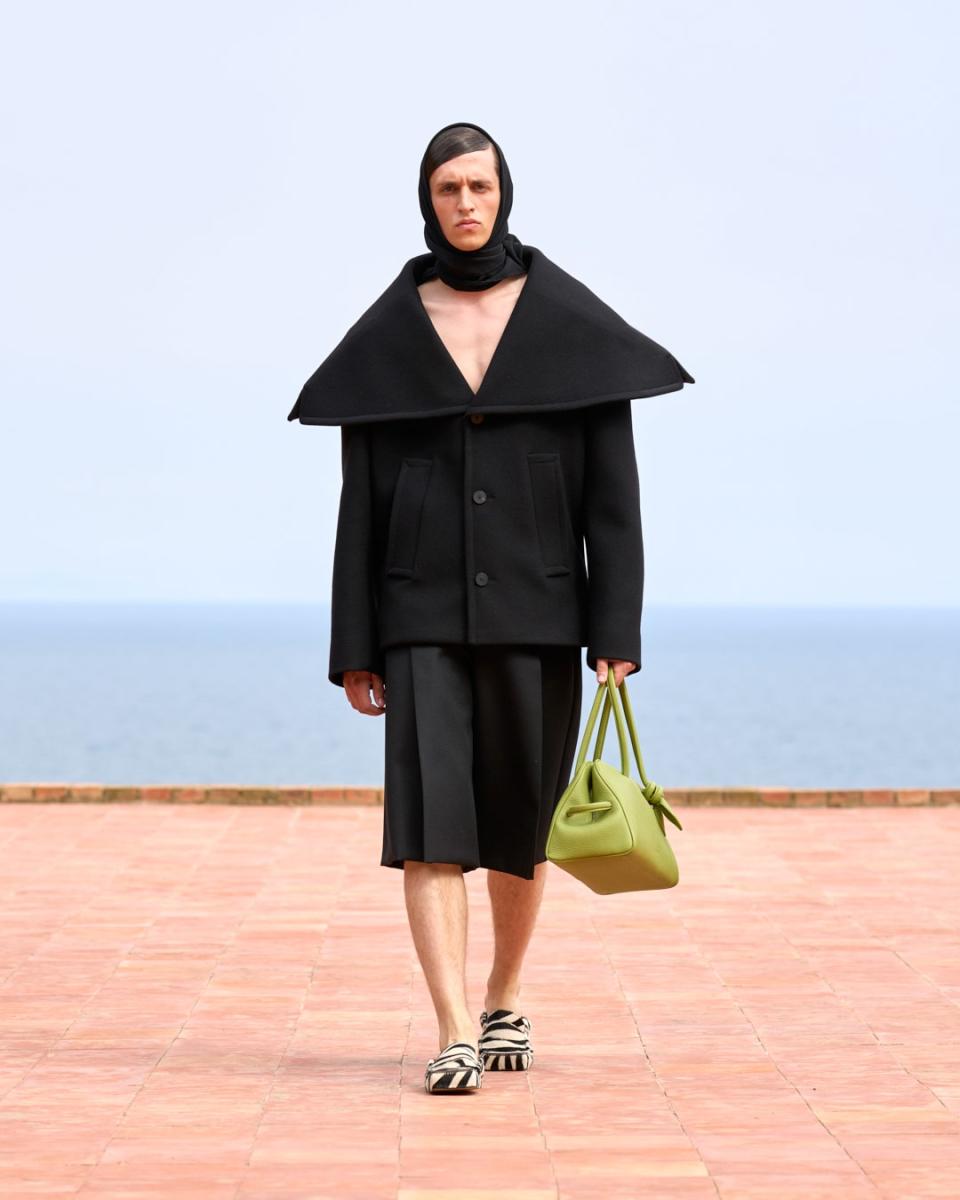
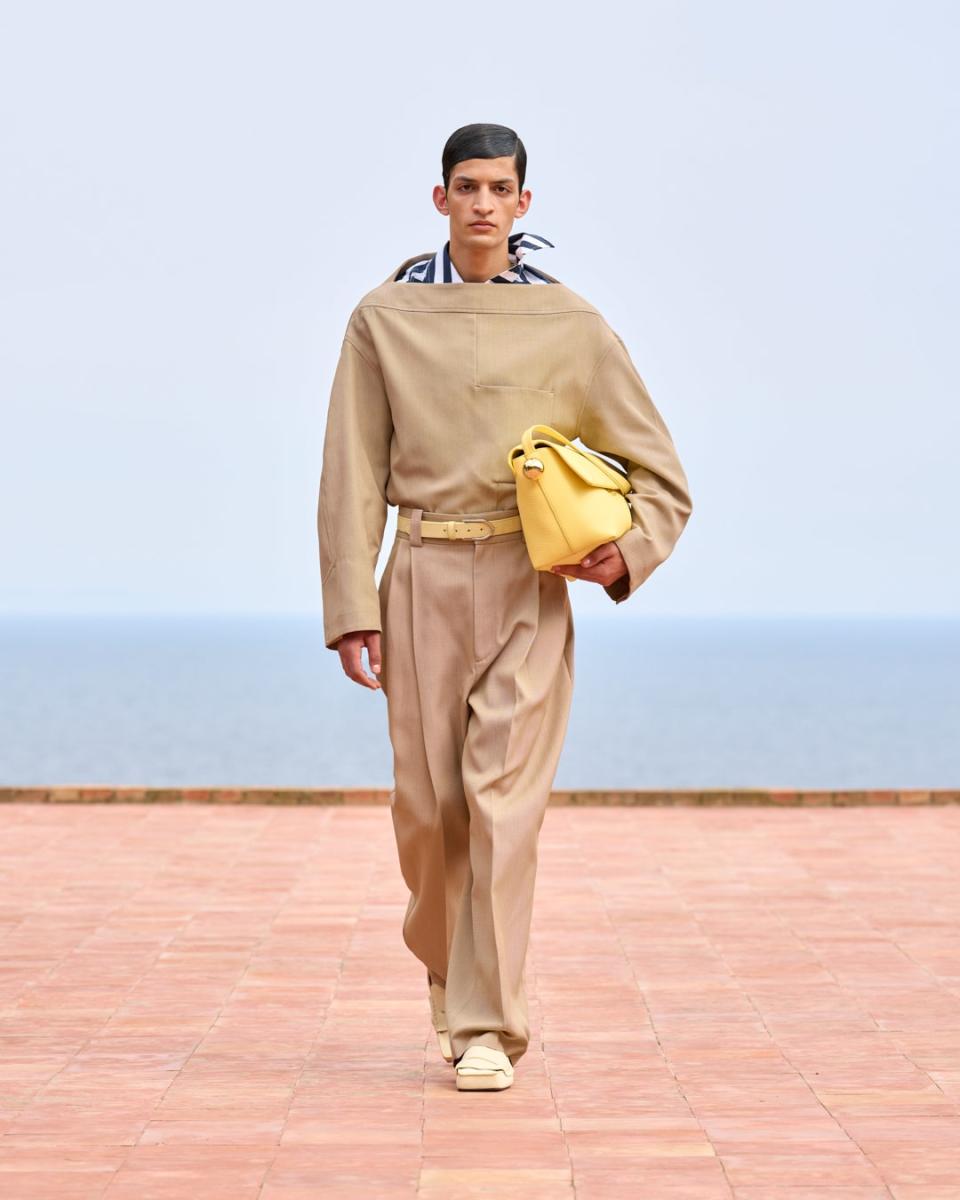

At its best, Jacquemus can be as satisfying as a ripe summer peach. Porte Jacquemus evidently agrees. “I have to say as well, the bags and the shoes, they are really delicious,” he said. Even in passing on the runway, you could tell the quality of the loafers and espadrilles, and leather bags in citrusy hues, has improved season on season. But for a collection presented in the blinding June sun, some fabrics looked too heavy and structured, like a stiff raw denim and the gray wool blazer of an awkward boxy blazer. The finest pieces had a sense of flow, like a tan overshirt tucked into matching trousers, and a slim tropical wool pant with a cropped military jacket. “Very ’90s,” Porte Jacquemus said. “It could have been an Armani man, and I love so much Mr. Armani.” He declared it is the look he’s most excited to wear. Porte Jacquemus should keep following his instincts.
15 years in, Jacquemus is growing up. Porte Jacquemus is determined to elevate the quality and exclusivity. “Does that mean the prices are higher? Yes, this is the reality.” But since launching this new phase of what he calls “pop luxury” in January, his young customers have grown up with him. “There is no price resistance,” he declared, adding that he wants Jacquemus to remain the “welcoming brand that we are.” Another reason why Jacquemus is a hit with young people? As soon as the models—led by Anok Yai and closed by Blackpink superstar Jennie—processed down the stairs in finale, you could purchase pieces from the “La Casa” collection online; Porte Jacquemus is one of the only designers at his level to have figured out how to make the once-vaunted see-now-buy-now concept work. The modern Capris clock in at $735.
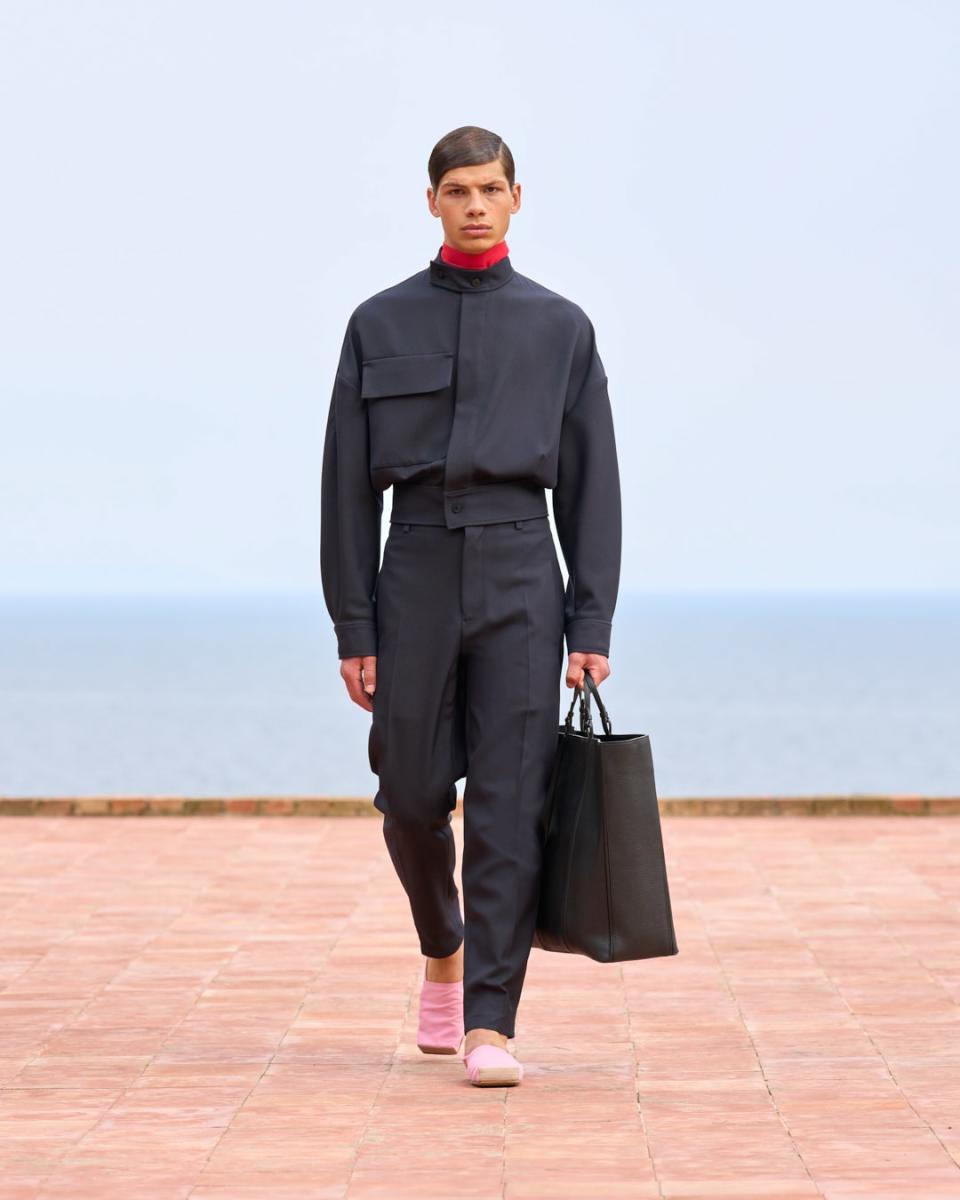
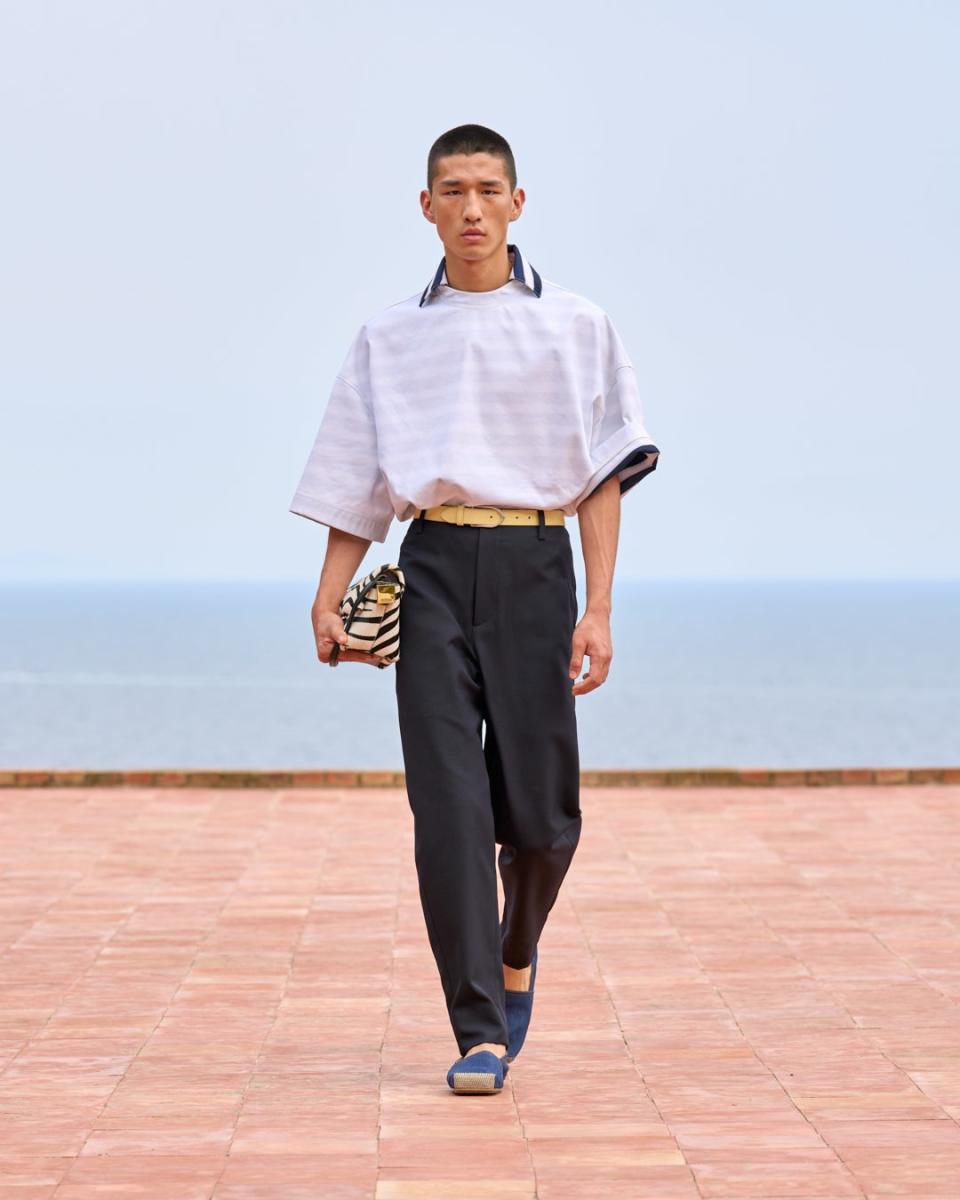
Jacquemus has captivated a passionate audience with his sincere and accessible vision—and, most importantly, he has figured out how to sell directly to them right when they want to buy and wear it the most. Rather than who should take over Chanel (or Givenchy, or Dries Van Noten), a better question the men’s fashion world might ask this season might be: who will be brave enough to try to replicate Jacquemus’s independent path to success?
After a clearly emotional Porte Jacquemus took his bow, he blew a kiss in Paltrow’s direction. Moments later, as some guests bolted for the nearest spot of shade, a couple Jacquemus employees set up the moodboard on the edge of the roof. A few steps away, Paltrow posed for photos with Porte Jacquemus, who beamed like a dream was coming true. In the preview, I asked about their connection, and the designer told me he had never met her before. “I think the celebrities are aware of us, of our social media I guess,” he replied. “And they see the fun and they want to be a part of it.” Or at least their kids do!
See all of our newsletters, including Show Notes, here.
Originally Appeared on GQ


